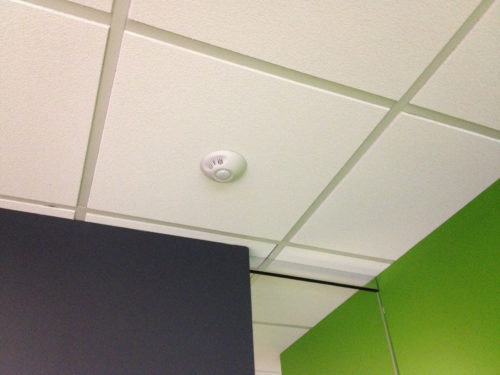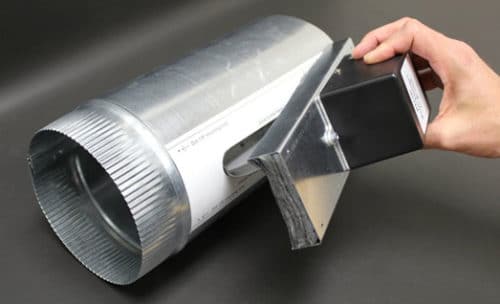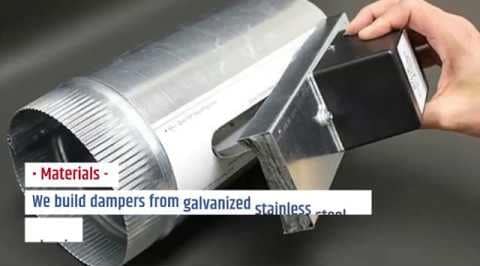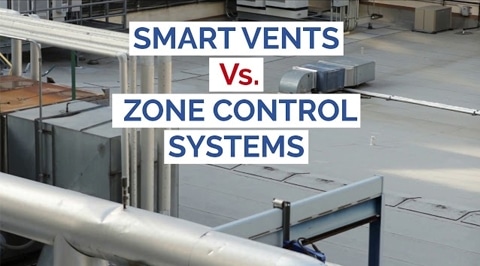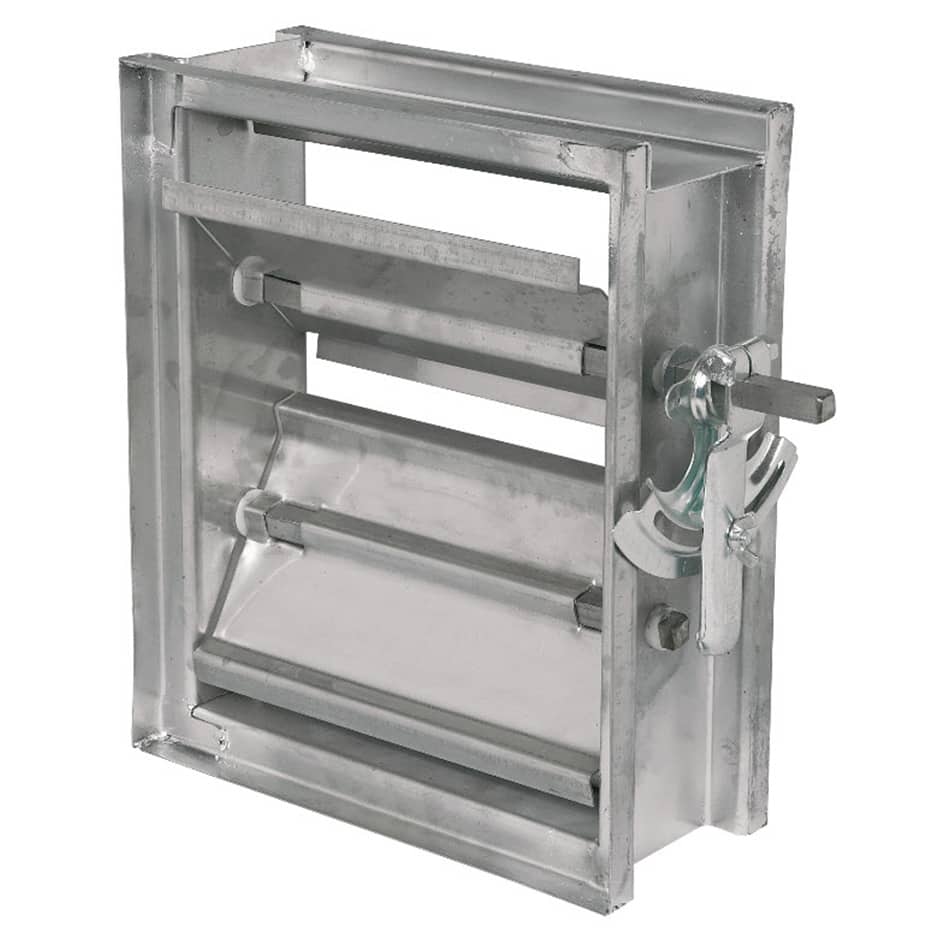Increasing the Energy Efficiency of Your Facility With Occupancy Sensors
Occupancy sensors are detection devices that identify the presence or absence of a person or persons and adjust the environment accordingly. Depending on the configuration of the occupancy sensor, when it detects someone in a room, it can automatically signal the room’s lighting, HVAC, and/or other systems to turn on.
Once it detects the room is empty, it turns these systems off. More advanced occupancy sensors offer the option to toggle between different modes, such as automatic, vacant, or occupied settings.
What Is an Occupancy Sensor?
By implementing occupancy sensors in their facilities, industry professionals can optimize airflow and lighting control within their workspaces, reducing overall energy usage and costs.
Types of occupancy sensors available include:
- Passive infrared (PIR) sensors. These sensors work by monitoring the level of infrared radiation in a room. If an object, such as a person, enters the area and exhibits a different temperature than the baseline, the sensor triggers the programmed system response.
- Ultrasonic sensors. Ultrasonic sensors emit high-frequency sound waves, which bounce off of objects in the room and reflect back to the sensor. When the reflection patterns change constantly, the sensor determines that someone is present and activates the appropriate system. Unlike PIR sensors, ultrasonic sensors don’t require an unobstructed line of sight to function and can detect individuals who are behind barriers or around corners.
- Microwave sensors. Microwave sensors function similar to how ultrasonic sensors do. However, instead of utilizing sound waves, they emit high-frequency microwaves. The reflection of the waves is used to determine the room’s occupancy status.
- Smart meters. Smart meters monitor changes in a room’s power consumption levels to determine whether the room is occupied.
- Environment sensors. Environment sensors respond to changes in environmental variables that occur when someone is present, such as an increase in carbon dioxide, humidity, or temperature levels.
Differences Between Occupancy Sensors and Vacancy Sensors
Occupancy sensors respond to the presence and absence of an occupant. When someone enters the room, the sensor automatically triggers the connected system(s) to turn on. Once they leave the room, the sensor turns the system(s) off.
On the other hand, vacancy sensors only respond to the absence of occupants. Anyone entering a room with a vacancy sensor has to turn the systems on manually. When the vacancy sensor detects that the room is empty again, it then turns these systems off.
Occupancy sensors and vacancy sensors employ different operating mechanics but offer similar results—i.e., lower energy usage and costs. One advantage of vacancy sensors is that they cannot accidentally be triggered to turn lighting or HVAC systems on, resulting in even lower energy costs. However, occupancy sensors allow for more streamlined control over airflow and lighting, making it easier to maintain a comfortable work environment.
Differences Between Occupancy Sensors and Motion Sensors
Occupancy sensors respond to the physical presence of a person in a room, whether or not that person is moving. Motion sensors respond to movement alone and cannot detect individuals at rest.
When a motion sensor detects movement, it turns on the systems. When that movement stops for more than a set amount of time, the sensor turns the systems off again. If a person remains still for long enough—for example, if he or she is sitting at a desk reading materials—the motion sensor will turn the lights, ventilation, or other environmental systems off, even though they are still present in the room.
Industry professionals employ both types of sensors to improve the energy efficiency of the HVAC and lighting systems. However, occupancy sensors offer greater functionality than motion sensors, while motion sensors are available at lower costs than occupancy sensors.
Occupancy Sensors From Alan Manufacturing
Since our company’s establishment in 1992, the team here at Alan Manufacturing has designed more than one thousand standard HVAC industry products. Along with our long history of selling industrial products, we have also sold occupancy sensors that optimize lighting and airflow control to go along with our dampers.
We offer high-quality products, competitive prices, and attentive customer service.
To find out more about how our HVAC products can improve airflow and reduce energy costs in your workspaces, contact us today.
Diagnosing Damper Issues
Dampers are plates or valves that regulate or stop the airflow inside chimneys, ducts, VAV boxes, and other air-handling equipment.
These components regulate central air conditioning for room-by-room climate and temperature control, and they also cut off the central air conditioning’s cooling or heating as needed.
How Do HVAC Dampers Work?
HVAC dampers come in one of two forms:
- Manual dampers operate by having users twist a screw to direct airflow to a section of pipe
- Motorized dampers use automated programming to calibrate damper settings
Zone Dampers
What Is a Zone Damper?
A zone, or volume-control, damper regulates or stops the airflow in your cooling or heating equipment. It can cut off airflow to an unused room or allow different rooms to be set to different temperatures.
For example, you can set your living room to be warmer while you unwind after work and set your bedroom to be cooler while you sleep.
What to Look For in a Zone Damper
Zone dampers require a few critical components to function properly. The zone control panel acts as the brain of the zoning application, communicating among the heating/cooling equipment, dampers, and thermostats.
Some zone panels can be installed on manual dampers, and motorized dampers may require updated zone panels as the equipment ages. When you order your panel, you must make sure that it’s compatible with your existing equipment.
Why Zone Your Damper?
Zoning your damper gives you more control over your heating and cooling systems, saving you money and increasing comfort levels for those in your building. Furthermore, electronically controlled moderating dampers such as electronic thermostats automatically adjust the temperature in each room. This means you do not have to think about cutting off air to rooms you rarely use.
Diagnosing Damper Issues
To properly diagnose issues with your damper equipment, you must first determine whether your HVAC damper is manual or automatic. Automatic dampers use control motors, and manual dampers have adjustment handles on the ductwork.
After determining the type of damping equipment your system has, follow the ductwork to find which registers the damper fits with. While your system runs, check the register’s airflow.
Manual Control Damper
If you have a manual damper, set the damper handle in the closed position. Then, check to see whether the airflow has stopped in the registers. Flip the damper into an open position and inspect the registers once more to see if airflow begins. You probably have a bad damper if, when the damper is closed, you feel limited airflow or none at all.
Automatic Control Damper
If you have an automatic control damper, turn on your HVAC system to see whether there is airflow in the registers. If your room will not maintain temperature, but there is a marginal amount of airflow, or if your room feels drafty and there is a great deal of airflow, you may have a faulty HVAC damper.
Standard and Custom Dampers at Alan Manufacturing
Over the last 25 years, we at Alan Manufacturing have designed over 1,000 products including standard HVAC dampers, zone control systems, and specialized items to meet the unique needs of our customers. If you would like to learn more about the benefits our systems can bring to your home or business, please don’t hesitate to contact us today.
HVAC Damper
Businesses and homeowners constantly strive to get the most cost-effective performance from their HVAC systems. Many do so by maintaining control over the distribution of warm or cool air through the installation of HVAC dampers, which oversee airflow throughout your system.
An HVAC damper is a valve or plate that performs a function similar to that of a traffic cop in a major intersection. These components control the amount of heated or cooled air that passes through the HVAC’s ducts toward the system’s distribution network. HVAC dampers act in tandem with the thermostat to deliver the desired air quality—thermostats control the temperature of the air, and dampers control the amount of air that flows through the system.
Dampers allow for more precise control over zone heating and cooling. Using these components results in major cost savings for the operator, because the responsibility for heating or cooling a room relies on more than just a thermostat.
HVAC dampers also allow operators to either limit or completely shut off airflow to unused zones or zones that require a lower volume of heated or cooled air. This permits your central HVAC system to provide temperate air for rooms in use without wasting it on empty areas, resulting in increased energy and cost savings.
Manual Dampers vs. Automatic Dampers
There are two common types of HVAC dampers: manual and automatic. Each system brings unique benefits to HVAC applications.
Manual Dampers
Levers located outside of air vents and ducts control damper plates or valves in a manual system. Most manual dampers have a straightforward design that allows operators to intuitively control airflow through the system, and they tend to be relatively durable and maintenance free.
However, manual dampers lack the precision of automatic dampers. They also cannot be operated remotely, which especially creates difficulties in facilities that mount their HVAC systems on or near their ceilings.
Automatic Dampers
Automatic dampers use small motors to open and close damping plates and valves. The main difference between automatic and manual dampers (including manual motorized dampers) is that automatic systems can be controlled remotely and can self-regulate in response to changing climate conditions.
Operators use thermostats to designate the desired conditions in each of the various zones, and the thermostats then calculate the precise air temperature and airflow that can achieve these conditions. This means that automatic dampers can provide much more precise internal climate conditions than manual dampers, and they can be programmed remotely to doing so.
Diagnosing Damper Issues
Zone dampers tend to be pretty reliable when it comes to monitoring airflow in your systems. However, there are occasions when zone dampers malfunction and create heating or cooling issues.
A number of factors can cause damper issues, but fortunately, systems tend to malfunction in fairly predictable ways, which makes problems easy to diagnose.
Here are some tips for evaluating the health of your manual and automatic damper equipment:
- Check the register’s airflow while the system is running. Evaluating any fluctuations in airflow along the duct line will give you a sense of where the malfunction is occurring
- For manual dampers, close a specific damper using the damper handle. While air continues to flow through the rest of the system, check the registers associated with that particular damper to determine whether airflow has ceased. Then, reopen the damper and check the registers again. If you feel airflow when the damper is closed or no airflow when the damper is open, then you have a damaged damper.
- Troubleshooting automatic dampers involve a different process. Turn on the system and adjust the zone thermostats to a level that will guarantee airflow. Check for airflow in the associated zone registers. If you feel low airflow but the room does not maintain its temperature, or if there is plenty of airflows and the room is drafty, then you could have a faulty HVAC damper.
By and large, malfunctioning dampers are among the least costly issues you will run into in central heating and air conditioning systems. Eliminating this problem is the first step in troubleshooting HVAC systems.
Alan Manufacturing’s Duct Dampers
At Alan Manufacturing, we focus on building high-quality duct dampers for a variety of applications. We provide many types of manual, automatic, and customized dampers to fit the specialized needs of our clients, and we also manufacture components for entire zone control systems.
Manual Dampers
Alan Manufacturing produces a broad range of manual dampers for various installations and for OEM replacement. Among the manual dampers we produce are:
- Volume dampers: We build a variety of gasketed and nongasketed volume dampers, and collared dampers.
- Cable-controlled volume dampers: Alan provides damper controls, which use rotary-to-linear (rack and pinion) mechanical actuator-assembly damper systems for precise and dependable calibration.
- Barometric bypass dampers: These dampers prevent damage to duct systems by bypassing duct static pressure when ducts open and close.
- Manual damper tube assemblies: We offer a dozen different standard damper tube assembly configurations.
Automatic Dampers
We also build a wide variety of automatic dampers and automatic damper systems to meet the needs of our clients, including:
- Motorized round-tube and collar dampers: We offer a variety of tube and rectangular collar dampers for new installations or to retrofit old ones.
- Modulating damper systems: We build damper systems that use thermostats for airflow zone control.
- Wired zone-control systems: These systems automatically adjust heating or cooling to areas that need greater or lesser airflow.
- Wireless zone-control systems: We build these systems to retrofit manual dampers with motorized remote-control systems.
Custom HVAC Damper Capabilities
Whether manual or automated, our zone-control systems serve a broad range of applications across many industries. In addition to manufacturing standard systems, we also provide customized HVAC zone-control systems. Some of our capabilities include:
- Materials: We build dampers from galvanized stainless steel, aluminum, plastics, and other UL-approved materials.
- Damper types: We can build round-tube or collar-tube, rectangular, blade, shutter, or radial dampers per your specifications.
- Control methods: Dampers can be customized with manual, wired zone control, or wireless zone control capabilities.
- Production volumes: We can achieve low- and high-volume production runs as well as product prototyping.
- Lead times: We quote lead times on a job-by-job basis, but most projects typically require 10 days (we also do emergency and rush-order runs as needed).
Our fully furnished facility is capable of a broad range of additional manufacturing capabilities, such as:
- Accessories
- OEM replacement parts
- Assembly
- Punching
- Riveting
- Tooling
- Packaging
- Barcoding
We also have design engineering services available, making Alan Manufacturing a one-stop solution for the HVAC damper and zone-control needs of our clients.
Industry Standards
We emphasize quality assurance and industrial compliance in everything that we do. Alan Manufacturing assembles all equipment to the following standards:
- American Society for Testing and Materials (ATSM)
- CE certification (a mandatory requirement for products in the European Economic Area)
- Restriction of Hazardous Substances (RoHS) code
- UL certification
Boost Your Savings with Alan Manufacturing
Controlling the airflow to your structure’s different zones will reduce costs and improve your environmental efficiency. No component is as essential to this as HVAC dampers.
Alan Manufacturing provides both manual and automatic damper and zone-control systems to improve airflow control. We build both standard and customized systems to meet the needs of our clients.
The Benefits of Effective Zone Control Systems
Zone control systems consist of air duct dampers that control internal facility climate according to preset temperature settings. These systems separate areas within a facility from each other and maintain unique temperature settings in each area.
Zone control systems incorporate thermostats, electronic dampers, and control panels to maintain smooth operations. Dampers serve as valves that control airflow throughout identified zones. They connect with thermostats, which take accurate temperature measurements of each respective zone. These thermostats send signals through control panels, triggering dampers to either open or close until they achieve the desired temperature.
Thermostats offer versatile functionality as they can integrate with special control features like time delay relays, improving the on- and off-switching controls of a unit. This helps prevent premature wear and tear to HVAC units by providing a three- to five-minute grace period between operating times.
Benefits of Zone Control Systems
Professionally installed zone control systems offer a broad range of long-term advantages. They allow individuals to remotely control temperature settings without interfering with temperatures in other sectors. They also offer even temperature distribution without compromising comfort and ease in the process.
Zone control systems reduce facility climate control costs since the time delay relay allows operators to easily regulate consumption. This process conserves energy by minimizing heat in unnecessary areas and directing it to rooms that require it. Zone control systems also significantly prevent HVAC wear and tear by harnessing atmospheric controls to reduce system usage.
Smart Vents vs. Zone Control Systems
Smart vents use your facility’s air vents to direct airflow to and from unused areas by integrating intelligent detection systems in your facility. This process also determines the air needed to meet target temperatures and can redirect air as needed.
Although smart vents require minimal modification to existing systems, they can’t control air conditioners and furnace units. Smart vents only modulate air already existing in your system, so excess or high-pressure airflow can lead to unexpected pressure changes and duct system leakage.
On the other hand, zone control systems incorporate dampers and thermostats that automatically adjust temperatures across your facility. They also allow better flexibility in controlling the temperatures of independent sections by using zone dampers that channel the conditioned air into preferred zones.
Moreover, zone control systems use programmable thermostats that adapt to seasonal changes, making them more convenient for facilities requiring substantial temperature variations. This aspect provides exceptional comfort and energy savings compared with smart vents.
How to Zone an Existing HVAC System
Zone control systems modify HVAC systems that have easily accessible ductwork. To facilitate zoning, installers strategically place dampers in air ducts to execute open or close controls signaled by control panel thermostats. Altering the thermostat in a specific zone will trigger the control panel, commanding dampers to adjust accordingly and deliver the required temperature for that zone.
In other cases, zoning systems require additional considerations such as air pumps to execute monitoring functions that meet required parameters like air pressure. Bypass dampers relieve high air pressure caused by pressure changes across different zones.
Cost-Efficient Climate Control
To minimize cooling and heating expenses while maximizing comfort and convenience, consider installing a zone control system with Alan Manufacturing Inc. We offer the know-how and passion to achieve the climate control solution that will fit your needs.
We provide excellent zoning solutions to our clients via cutting-edge products that include radio frequency (RF) thermostats and main thermostat controllers, converting heating and cooling concerns into comfort and perfection.
Visit our page to learn more about our line of products and services.
Choosing the Right Blade Damper
Choosing the Right Blade Damper
Blade dampers are structures consisting of thin metal plates used to stop or regulate the flow of air inside air handling equipment such as ducts, chimneys, and HVAC systems. They are primarily necessary to ensure air handling systems run smoothly and efficiently. Dampers can also be used to control central air conditioning or regulate room temperatures for the occupants of a house or building.
Blade dampers can either be manually or automatically operated. When controlled by hand, a lever or handle is used to adjust the angle of the damper blades as required. Automatic dampers are controlled by electric or pneumatic actuators, which are operated by electronic sensors and controllers linked to a thermostat or a building automation system.
There are typically two different types of blade dampers used to modulate air flow: parallel and opposed blade dampers. Parallel blade dampers are designed in a way so the blades move in the same parallel direction (similar to a window louver) when opened. Opposed blade dampers have the blades moving in opposing directions. While these two systems sound similar, they perform differently, making them each suited for applications with varying requirements.
Parallel vs. Opposed Blade Dampers
These two dampers have unique flow characteristics due to their distinct construction. On a graph displaying the relationship between flow rate and position of the blades, both opposed blade dampers, and parallel blade dampers exhibit nonlinear characteristics. However, an opposed blade damper have a shallower curve with a pronounced slow increase in flow rate as the dampers begin to open.
In contrast, parallel blade dampers have a relatively steeper, more aggressive flow rate to damper position curve. As the dampers open, the flow increases more rapidly compared to opposed blade dampers.
In practical terms, this means parallel blade dampers are better suited for volume control applications from wide open to 75% of wide open. Since the air flow in parallel blade dampers is more sensitive to arm swings, small changes in damper position can yield significant temperature changes. As such, parallel dampers are commonly used for open/close applications. These dampers are also less complicated and more cost-effective than their opposed blade counterparts.
Opposed blade dampers are ideal for applications requiring volume control over a broader range, from wide open to 25% of wide open. The arm swing of the opposed damper blades has a more proportional and controlled and damping effect, making the opposed blade configuration better suited for modulating applications.
Contact Alan Manufacturing, Inc. for Opposed Blade Damper
Alan Manufacturing, Inc. provides a wide array of HVAC damper systems, hardware and accessories, duct supports, and zone control systems for a range of industries. To learn more about which damping system is right for you, contact our support team today for more information

